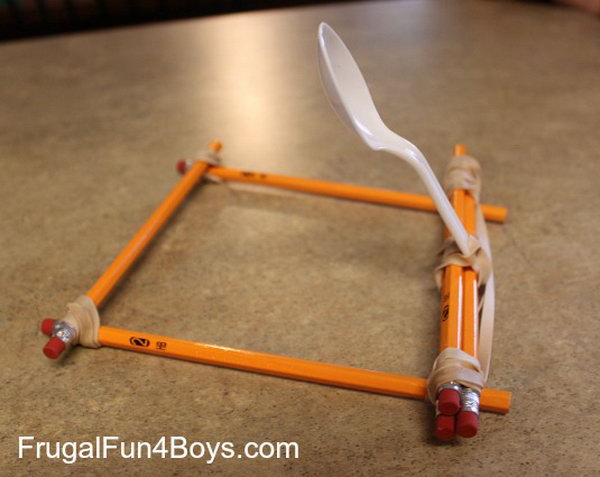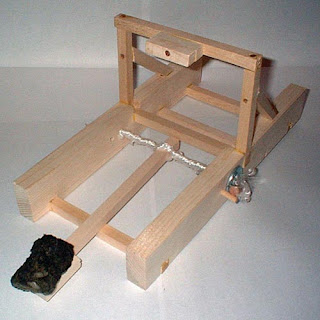
The "arm house" is the part of the catapult that holds the pivot arm(a metal pole in our case) as well as the "stopper" which is essentially the most important part of a catapult, as it transfers energy from the arm to the ball ( think of inertia and moving cars, what happens when you get into an accident?!). MAKE SURE THAT THIS PIECE OF WOOD IS 100% SECURE, AS IT IS GOING TO BE TAKING ALL OF THE FORCE OF THE 'LOADED' SPRINGS!

We used about 2.5 inches from the end of the three-feet pieces. If you wish, you can experiment with different posistions. As you will notice in the attached picture, this piece is not at the very end of the three-feet pieces this is because, we determined it would be too difficult and probably dangerous to stretch the springs that far. Proceed to connect the other two-foot piece of wood to the opposite ends of the three-feet pieces of wood. Screw and/or brace those together as well, and ensure they do not move. Then, place the other three foot piece of wood aligned with the opposite corner of the two-foot piece.

Proceed to safely screw the pieces of wood together(with or without metal braces), ensuring that after you have finished that the pieces of wood do not move even slightly. You are essentially stacking the two foot piece on top of the three foot piece, and aligning their corners. Then, align the side of the two foot piece of wood with the top of the three foot piece.

Lay one of the two feet pieces of wood out, aligning the bottom of it with the side of the three-foot piece. However, we did not and the catapult is still structurally stable. We recommend using braces as it is likely to make your catapult more stable. At this point you'd have two options you can either connect the pieces of wood directly with screws, or you can connect them with braces, again using screws. First, take one of the three feet pieces of wood and lay it out straight.


 0 kommentar(er)
0 kommentar(er)
